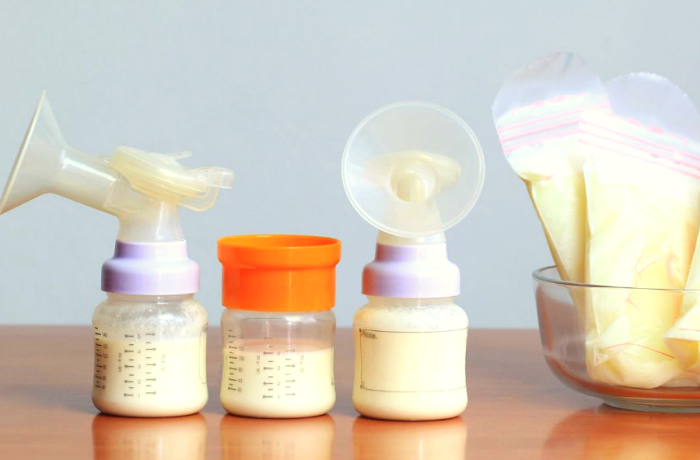
10 Attributes of a Quality Preschool
by on 02/08/2025 12174

According to Deputy Education Minister Datuk P. Kamalanathan, preschool enrollment has increased from 81.7% in 2013 to 84.6% in 2015. In 2016, the ministry is targeting for enrollment to reach 90%.1 With this rise in preschool enrollment, the number of preschools in Malaysia has been steadily growing as well and would continue to increase in the near future to meet new demands.
For parents, this means they can expect to have more choices when it comes to selecting a suitable preschool for their child. However, there’s a caveat to this. While it’s good to have many preschools in Malaysia offering a variety of attractive programs and different features, it can be difficult to pinpoint a truly quality preschool from simply fancy ones.
Good news is, as part of the second phase of the Malaysian Education Blueprint, the Early Childhood Care and Education (ECCE) Council will be looking into improving the quality of preschool management, teachers and parent-school interactions along with the implementation of national preschool curriculum standard, as well as safety, health and nutrition.1
Nevertheless, while this is being set in motion, parents should also take responsibility to gain awareness and have more insight on what a quality preschool is. Here are ten essential aspects that a quality preschool would always prioritise, which set them apart from other mediocrely managed ones.
1. Safe, Clean and Healthy Environment
Your child’s safety and health always come first. Quality preschools prioritise this and are meticulous in ensuring their facilities are in excellent condition and safe for children. Alongside general cleanliness, classrooms would have a bright, airy, lively and feel-good ambience. There would be basic safety features implemented – for example, safe toys and equipment without sharp edges, covered electrical sockets and safe storage of dangerous equipment or toxic materials. Toys, learning materials and other educational tools are also readily accessible. A good preschool is also located in a friendly and safe neighbourhood, far away from security or health hazards. Additionally, the management will have a strict pick-up policy to ensure the safety of your child.
2. Wholesome Curriculum
While every preschool would have their own curriculum, a good one offers programs that have a well-rounded focus on all areas of a child’s development. This is in line with Kurikulum Standard Prasekolah Kebangsaan (KSPK) or National Preschool Standard Curriculum set by the Ministry of Education which aims to develop the following skills in children: social skills, intellectual skills, physical skills, spiritual skills and aesthetic values (creativity and appreciation).2 Generally, good preschool curriculum or programs would feature an excellent combination of reading, writing, mathematics, art and crafts as well as a fair amount of hands-on activities that help children develop social skills, creativity and self-expression. The programs should also be interesting and age-appropriate for your child.
3. Well-Balanced Activities
On a typical day at a good preschool, teachers ensure that every child has something to do alone and with others. Daily programs will include ample time for individual activities, creative work, socializing, physical activity and group play along with snacks/meal times and quiet time. Children are never left idle or expected to stay put and quiet for long periods of time.
4. Outdoor Play
Are outdoor play sessions scheduled and are they age-appropriate? Quality preschools make sure pre-schoolers have plenty of opportunities to practice and master their emerging physical skills like running, jumping, kicking and climbing. For this reason, these schools would have play-and-learn sessions held outdoors targeted at different age groups. To cater to this need, good preschools usually have spacious gardens or well-maintained outdoor spaces.
5. Competent and Caring Teachers
Good preschools always keep to a low teacher-to-child ratio to ensure every child receives quality interaction and attention from the teacher. It’s a good idea to observe how teachers interact with the preschoolers. Are they attentive and responsible? Are the kids at ease with them? Good preschools meticulously select their teaching staffs to only hire those that are qualified and experienced. Also, are the teachers happy working there? A low turnover rate of teachers is crucial as this can ensure that your child will have consistent and stable guidance throughout the year.
6. Healthy Food
Quality preschools ensure that only nutritious snacks and meals are offered to young children. They would also take note of any dietary restrictions – for example, which foods are allowed or not allowed due to health concerns, religious beliefs, personal beliefs or cultural customs. On top of this, good preschools are always meticulous in maintaining a healthy, safe environment for food preparation and eating areas.
7. Sick Policy
How well a preschool handles sick children and any outbreaks of various illnesses can also give you clues about the preschool’s level of quality and experience. A good preschool will have a sick policy firmly in place and proper care will be taken to prevent cross-infection of viruses and bacterial infection amongst students. Some good preschools may even have a list of procedures based on different common childhood illnesses for their staff members to follow.
8. Frequent Interactions with Parents
Do the preschool’s teachers and staff members communicate frequently with parents? A quality preschool usually involves parents in the preschoolers’ progress at school, keeping them updated frequently via parent-teacher conferences, report cards and scheduled meetings.
9. Has Good Credentials and Reputation
A quality preschool is licensed. While a license isn’t everything, this is important because you can be sure that these schools have been evaluated to meet standard regulations for health and safety. Additionally, find out if the school has a good reputation – for instance, what do other parents think about the school’s programs and environment? You can always ask the preschool for references from other parents; if not, you can stop by during after-school hours and approach parents. Alternatively, you can also search for reviews online or on social media platforms. Websites like this one offer well-researched information about different preschools to help parents out.
10. Visits Are Allowed
If a preschool does not allow you to visit, this should raise a red flag. Quality preschools are usually happy to make arrangement for parents to drop by to take a tour of their premises and check out their daily activities and amenities. During the visit, the management would also spend time explaining their teaching methods and programs. If you find that you are unable to get enough information about the school because the management seems to dodge many of your questions, it may be best to give this one a miss as good preschools are usually transparent about their operations and policies.




















